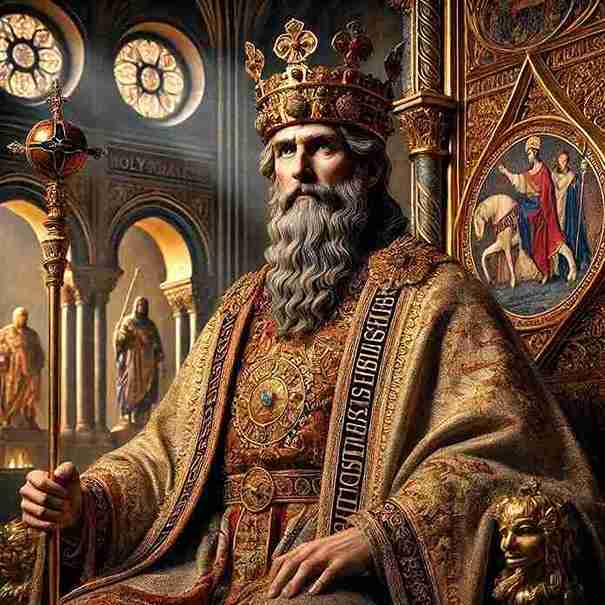Charlemagne, also known as Charles the Great, is a towering figure in European history. As King of the Franks, Lombards, and ultimately the first Holy Roman Emperor, Charlemagne reshaped the political, cultural, and religious landscape of medieval Europe. His reign from 768 to 814 CE marked the culmination of centuries of transformation following the fall of the Roman Empire, ushering in what many historians call the Carolingian Renaissance.
This article explores the life, achievements, and enduring legacy of Charlemagne, focusing on his military conquests, administrative reforms, cultural patronage, and the profound impact he had on European history.
Early Life and Rise to Power
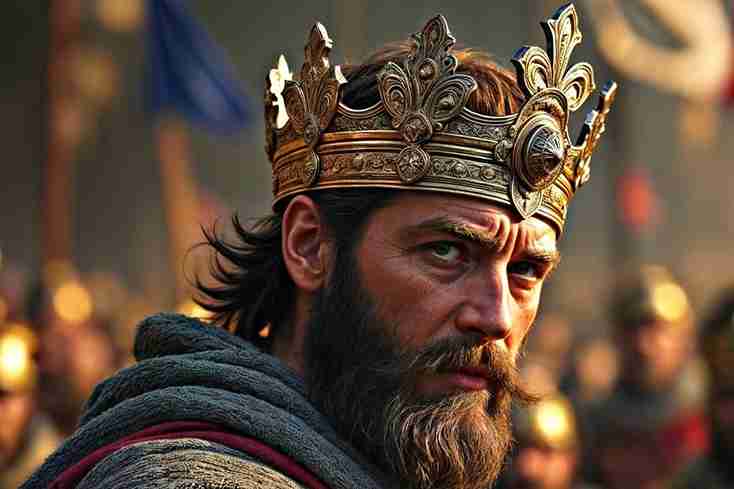
Charlemagne was born around 742 CE, the son of Pepin the Short and Bertrada of Laon. His lineage linked him to the Carolingian dynasty, a powerful family that had supplanted the Merovingians as rulers of the Frankish kingdom. Upon Pepin’s death in 768, the kingdom was divided between Charlemagne and his younger brother, Carloman.
The relationship between the two brothers was tense, but Carloman’s sudden death in 771 left Charlemagne as the sole ruler. This pivotal moment set the stage for his ambitious reign, during which he sought to expand and consolidate Frankish power across Europe.
Military Conquests and Expansion
One of Charlemagne’s defining achievements was his extensive military campaigns, which transformed the Frankish kingdom into a sprawling empire. His conquests were driven by a combination of political ambition, religious zeal, and a desire to unite Christendom under his rule.
The Saxon Wars
Charlemagne’s campaign against the pagan Saxons was one of the longest and most brutal of his reign. Spanning more than three decades, the Saxon Wars were marked by repeated uprisings and harsh reprisals. Charlemagne’s efforts culminated in the forced conversion of the Saxons to Christianity and the incorporation of their territory into his empire. The massacre at Verden in 782, where thousands of Saxons were executed, underscores the ruthlessness with which he pursued his goals.
Campaigns in Italy
Charlemagne’s conquest of the Lombard Kingdom in 774 solidified his power in Italy. By defeating King Desiderius, he not only expanded his territory but also strengthened his alliance with the papacy. This relationship would prove pivotal in his coronation as Holy Roman Emperor.
Other Campaigns
Charlemagne’s military exploits extended beyond Saxony and Italy. He fought against the Avars in Central Europe, subdued the Basques in northern Spain, and secured Frankish borders against various external threats. His military success earned him a reputation as a formidable and strategic leader.
Coronation as Holy Roman Emperor
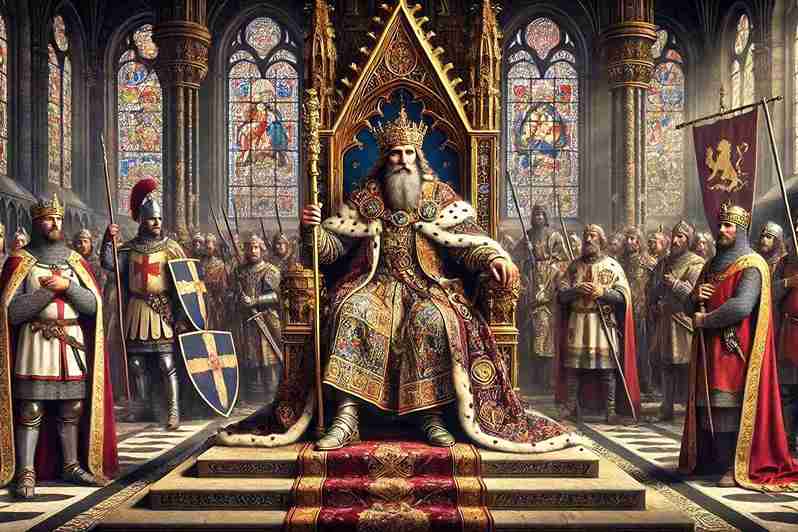
On Christmas Day in 800 CE, Charlemagne was crowned Emperor of the Romans by Pope Leo III in St. Peter’s Basilica. This momentous event symbolized the fusion of Roman, Christian, and Germanic traditions, marking the birth of the Holy Roman Empire.
The coronation was both a recognition of Charlemagne’s achievements and a political maneuver by the papacy to legitimize its authority. For Charlemagne, the title of emperor elevated his status and reinforced his role as a unifier of Western Christendom.
Administrative Reforms and Governance
Charlemagne’s empire was vast and diverse, encompassing a wide array of cultures, languages, and traditions. To govern effectively, he implemented a series of administrative reforms that laid the foundation for medieval European governance.
Regional Administration
Charlemagne divided his empire into administrative units called counties, each overseen by a count. To ensure loyalty and competence, he appointed officials based on merit rather than hereditary privilege. He also established a network of royal agents known as missi dominici to oversee local authorities and enforce imperial policies.
Legal and Economic Reforms
Charlemagne codified laws and promoted justice throughout his empire. He issued capitularies, or royal decrees, to standardize legal practices and address specific issues. Economically, he sought to stabilize currency by issuing silver coins, which facilitated trade and commerce across his domains.
Religious Governance
Charlemagne placed significant emphasis on the church’s role in governance. By integrating religious institutions into his administration, he strengthened his authority and ensured that Christian principles guided the empire’s policies. Clerics often served as advisors, bridging the gap between secular and spiritual governance.
The Carolingian Renaissance
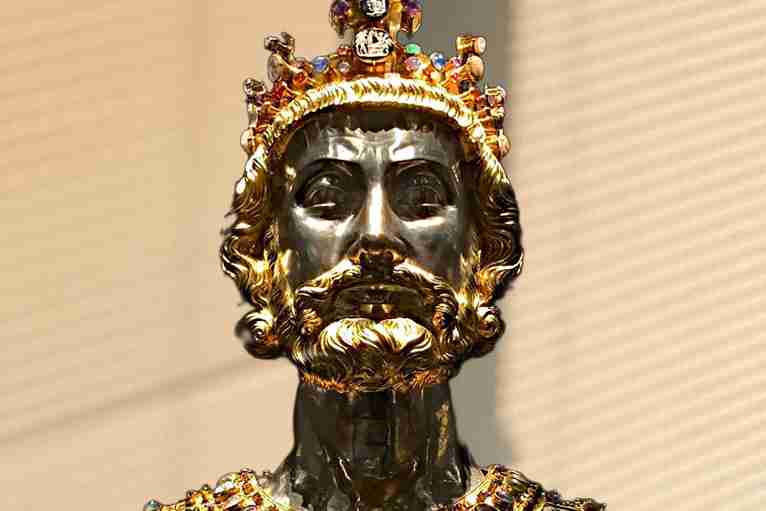
Charlemagne’s reign is often associated with a cultural and intellectual revival known as the Carolingian Renaissance. This period was characterized by a renewed emphasis on education, art, and scholarship, driven by Charlemagne’s belief in the importance of learning for both clergy and laypeople.
Promotion of Education
Charlemagne established schools in monasteries and cathedrals, making education more accessible. He invited renowned scholars such as Alcuin of York to his court, transforming it into a center of intellectual activity. The development of the Carolingian minuscule script, a standardized form of writing, greatly improved the preservation and dissemination of texts.
The emphasis on education extended to the general population, with Charlemagne encouraging the study of Latin and the copying of classical manuscripts. His efforts ensured the survival of many ancient texts that might have otherwise been lost to history.
Religious and Artistic Contributions
Charlemagne’s support for the church extended to the arts. He commissioned grand architectural projects, including the Palatine Chapel in Aachen, which became a symbol of Carolingian artistic achievement. Manuscript illumination and liturgical music also flourished under his patronage, leaving a lasting legacy in European culture.
The Palatine Chapel itself symbolized a blend of classical Roman, Byzantine, and Germanic influences, reflecting Charlemagne’s vision of a united Christendom. This synthesis of styles became a hallmark of Carolingian art and architecture.
Scholarly Pursuits
The Carolingian court attracted scholars from across Europe, fostering a vibrant intellectual environment. The preservation of ancient texts and the standardization of liturgical practices were key achievements of this period. Charlemagne’s dedication to scholarship laid the groundwork for future intellectual movements, ensuring that knowledge continued to thrive even in turbulent times.
Charlemagne’s Legacy
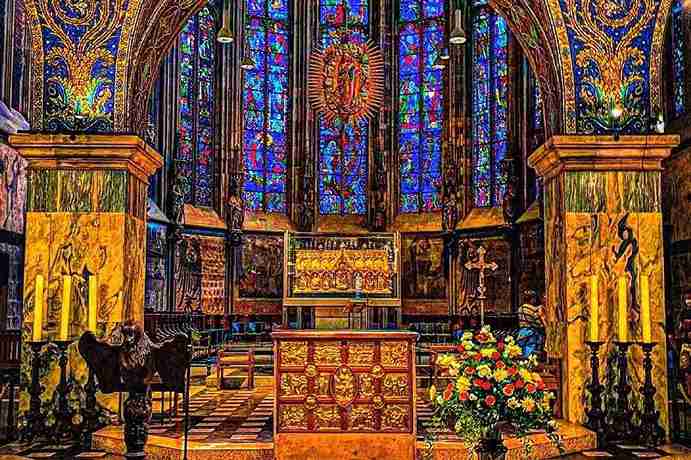
Charlemagne’s impact on European history is immense, earning him the title “Father of Europe.” His efforts to unify the continent under a central authority laid the groundwork for the medieval European order.
The Holy Roman Empire
The empire Charlemagne established endured in various forms for centuries, shaping the political and cultural identity of Europe. Although it fragmented after his death, the concept of a unified Christendom persisted, influencing European politics and diplomacy.
The coronation of Charlemagne as Holy Roman Emperor established a precedent for future rulers, intertwining the church and state in a relationship that would define European politics for centuries. His vision of a cohesive Christendom continued to inspire leaders long after his death.
Cultural and Educational Foundations
The Carolingian Renaissance set a precedent for future intellectual revivals, such as the 12th-century Renaissance and the later Italian Renaissance. Charlemagne’s emphasis on education and cultural patronage helped preserve classical knowledge and fostered the growth of European scholarship.
The development of the Carolingian minuscule script had far-reaching consequences. Its clarity and uniformity made written communication more efficient, influencing European literacy for generations.
Symbol of Leadership
Charlemagne remains an enduring symbol of effective leadership and statecraft. His ability to balance military ambition with administrative efficiency and cultural patronage serves as a model for rulers throughout history.
A Legacy of Unity
Perhaps Charlemagne’s greatest legacy is his vision of unity. At a time when Europe was fragmented, he sought to bring diverse peoples together under a shared identity. While his empire did not survive intact, his efforts planted the seeds for the eventual emergence of nation-states and the European Union.
Challenges and Controversies
While Charlemagne’s achievements are celebrated, his reign was not without controversy. His forced conversions and harsh treatment of conquered peoples, particularly during the Saxon Wars, have drawn criticism from modern historians. Additionally, the centralized authority he established often clashed with local traditions and autonomy, leading to tensions within his empire.
The Massacre at Verden
The massacre at Verden, where thousands of Saxons were executed, remains one of the darkest episodes of Charlemagne’s reign. Critics argue that such actions contradict the Christian values he sought to promote, highlighting the complexities of his rule.
Economic Strain
Military campaigns and ambitious projects placed a significant strain on the empire’s resources. While his reforms improved economic stability, the demands of sustaining a vast empire often led to overreach and challenges in maintaining cohesion.
The Family and Succession of Charlemagne
Charlemagne’s personal life and succession plan had a significant impact on the continuation of his empire. He had numerous children by multiple wives and concubines. His efforts to ensure their education reflected his broader cultural priorities.
Family Structure
Charlemagne’s primary wife, Hildegard, bore him many
Conclusion
Charle legacy as a unifier, reformer, and patron of culture is unparalleled in medieval European history. His reign marked a turning point, bridging the classical and medieval worlds and laying the foundation for modern Europe. By examining his life and accomplishments, we gain insight into the complexities of leadership and the enduring impact of visionary rulers.
As both a historical figure and a symbol, Charle continues to inspire and challenge our understanding of the past. His story is a testament to the transformative power of ambition, resilience, and the pursuit of greatness. Charle empire may have dissolved, but his influence endures, shaping the cultural and political fabric of Europe to this day.

